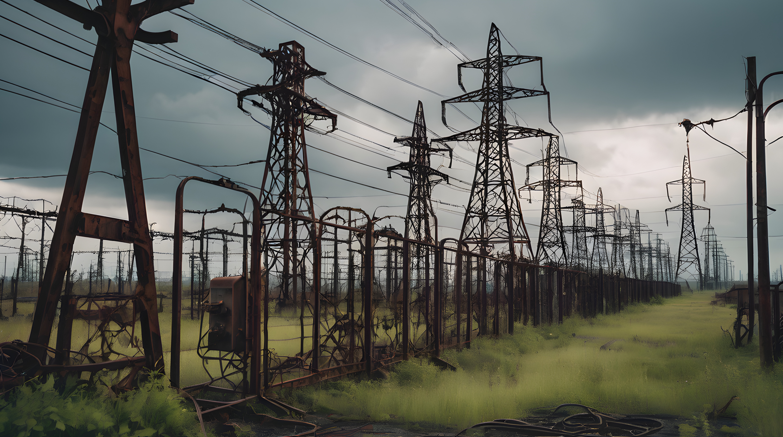The UK stands at a critical point in its energy transition. Europe’s largest battery system, a 200 MW/400 MWh facility in Scotland, went live in 2025, marking a significant milestone in renewable energy storage. This achievement represents more than technical progress. It signals the fundamental shift towards intelligent power networks that balance renewable generation with demand in real time.
Over 17GWh of grid connections are due to connect in 2025, demonstrating the rapid acceleration of battery energy storage systems across Britain. The convergence of solar photovoltaic technology with advanced storage solutions creates opportunities for grid operators, energy developers and engineering consultancies to reshape how power flows across the nation.
UK Solar and Storage Market Growth
The current expansion of solar energy storage reflects both policy support and technological advancement. Roughly 20% of new storage projects now co-locate with solar installations, creating hybrid renewable facilities that generate and store power at the same location. This integration reduces transmission losses and provides grid stability services previously available only from conventional generators.
Solar Energy UK expects solar generation to considerably exceed the government target of 45GW-47GW by 2030. The rapid growth stems from declining technology costs, supportive regulations and increasing recognition that distributed renewable resources enhance energy security.
Battery storage deployment accelerates alongside solar expansion. The UK pipeline includes 58,270MW/121,645MWh of approved grid-scale battery projects, representing substantial capacity additions over the coming years. These systems provide essential grid services including frequency response, voltage regulation and energy arbitrage.
Government policy actively encourages this growth. The Smart Export Guarantee ensures households and businesses receive payment for surplus solar power fed into the grid, while 0% VAT on solar panel installations until 2027 reduces deployment costs for end users.
Smart Grid Integration Challenges
Traditional electricity networks face significant challenges accommodating renewable energy sources. £200 billion worth of renewable projects are currently stuck in grid connection queues, with wait times reaching up to 15 years. This backlog threatens the UK’s ability to meet clean energy targets and requires systematic grid modernisation.
The UK’s electricity network, built in the 1950s, was designed to transport power from large centralised fossil fuel generators. Modern requirements include bidirectional power flows, variable renewable generation and distributed energy resources that create fundamentally different operational demands.
Weather-dependent renewable sources present particular integration challenges. Constraint payments to wind farms exceeded £250 million in the first two months of 2025, highlighting the cost of managing surplus renewable generation when transmission capacity proves insufficient. Energy storage systems address these constraints by absorbing excess power during high generation periods and releasing it when demand increases.
Smart grid technologies enable more sophisticated network management. AI-based nowcasting tools can forecast cloud cover hours ahead to predict solar generation, helping grid operators and storage providers balance supply more efficiently. These predictive capabilities allow proactive grid management rather than purely reactive responses to supply and demand imbalances.


Advanced Grid Technologies
Modern power networks incorporate digital technologies that transform how electricity systems operate. Smart meters provide accurate, real-time data on energy usage, helping consumers and utility companies monitor consumption, identify patterns and optimise energy use. This granular visibility enables demand response programmes that shift electricity consumption to periods of high renewable generation.
Grid-forming battery inverters can mimic the stabilising functions of traditional turbines, providing short-circuit power and synthetic inertia. These capabilities allow renewable-based grids to maintain stability without relying on conventional synchronous generators, supporting higher renewable penetration levels.
Energy storage technologies continue diversifying beyond lithium-ion batteries. Highview Power is constructing a 50 MW/250 MWh liquid-air energy storage plant in Greater Manchester, a first-of-its-kind cryobattery designed to store energy for many hours. Long-duration storage addresses overnight and seasonal energy gaps that shorter-duration systems cannot cover.
Internet of Things sensors and communication networks enable autonomous grid management. IoT technologies provide real-time energy generation and consumption data that helps balance supply and demand, especially with variable wind and solar power sources. This connectivity supports distributed energy resource coordination and grid optimisation across multiple time scales.
Economic and Policy Drivers
The transition to smart renewable grids creates substantial economic opportunities. Government figures suggest the smart grid upgrade could create as many as 130,000 jobs and contribute up to £11bn to the economy. Engineering consultancies, technology providers and construction companies benefit from the infrastructure investment required to modernise electricity networks.
The National Energy System Operator states that the UK needs to build five times more electricity transmission infrastructure over the next six years than constructed over the past three decades. This scale of development requires coordinated engineering effort across multiple disciplines including electrical, civil and software engineering.
Regulatory frameworks evolve to support the energy transition. The National Energy System Operator prioritises ready-to-go projects through new mechanisms that ensure battery energy storage systems with planning permission and grid connections progress quickly. These reforms prevent speculative projects from occupying valuable grid capacity while ensuring viable developments can proceed rapidly.
Private investment follows policy signals. Energy storage projects attract capital based on revenue opportunities from grid services, energy arbitrage and renewable energy integration support. The combination of declining technology costs and established revenue streams makes storage projects increasingly attractive to investors and developers.


Future Grid Development
The path towards fully renewable electricity systems requires continued innovation in grid management and energy storage. Vehicle-to-grid services allow electric vehicle batteries to feed power back to the grid at peak times, effectively acting as distributed storage. This integration multiplies storage capacity as transport electrification accelerates.
Digital replicas of the energy grid, known as virtual energy systems, are being developed to enhance planning and operational efficiency by simulating grid dynamics in real time. These tools enable better resource allocation and support grid investment decisions based on detailed system modelling.
International connectivity supports renewable integration. Cross-border interconnectors allow the UK to export surplus renewable generation and import clean electricity when domestic resources prove insufficient. This regional approach to grid balancing reduces storage requirements while maintaining system reliability.
Long-term energy storage technologies may address seasonal renewable variations. Hydrogen storage systems can provide inter-seasonal storage, allowing solar energy collected during summer to be available for release during duller autumn and winter months. These capabilities would further reduce reliance on fossil fuel generation during low renewable periods.
Engineering Solutions for Smart Grids
The complexity of modern power systems requires multidisciplinary engineering expertise. Grid modernisation projects integrate electrical engineering, control systems, communications technology and energy storage design. Successful implementations demand coordination between multiple technical specialisations and deep understanding of both renewable energy characteristics and grid operation requirements.
Solar energy integration presents specific technical challenges that engineering consultancies must address. Variable output profiles require sophisticated forecasting and control systems that predict generation patterns and coordinate with storage systems. Grid connection studies must evaluate impacts on power quality, fault levels and system stability.
Energy storage system design involves multiple engineering considerations including site selection, grid connection requirements, control system integration and performance optimisation. Projects require expertise in electrical engineering, civil engineering for foundations and infrastructure, and systems integration to ensure reliable operation within existing networks.
At Morson Projects, our Power and Renewable Energy team provides engineering design, technical advisory and project delivery services across the solar energy sector. Our experience spans solar PV plant development, grid integration studies and renewable energy system optimisation. We support manufacturers, developers, contractors and utility companies in planning and implementing solar projects that contribute to the UK’s smart grid development.
Our multidisciplinary approach combines 46 years of engineering experience with current knowledge of renewable energy technologies and grid modernisation requirements. We understand the technical challenges of integrating variable renewable sources with existing infrastructure and provide solutions that optimise both performance and cost effectiveness.


Grid Modernisation Benefits
Smart renewable grids deliver multiple benefits beyond carbon emission reductions. Enhanced grid visibility and control capabilities improve overall system reliability while reducing operational costs. Real-time monitoring enables proactive maintenance that prevents equipment failures and extends asset lifecycles.
Economic benefits extend across the energy sector. Reduced constraint payments, improved asset utilisation and enhanced system flexibility create value for grid operators, renewable developers and electricity consumers. The transition creates opportunities for new business models and services that were not possible with traditional grid architectures.
Energy security improvements result from diversified generation sources and enhanced storage capabilities. Distributed renewable resources reduce dependence on centralised generation and imported fuels while improving resilience against supply disruptions. Smart grid technologies enable rapid response to system disturbances and faster restoration following outages.
The combination of solar generation, energy storage and smart grid technologies positions the UK to achieve its renewable energy targets while maintaining grid stability and economic competitiveness. Success requires continued investment in grid infrastructure, supportive policy frameworks and engineering expertise that can deliver complex technical solutions.
Engineering consultancies play a crucial role in this transformation by providing the technical knowledge and project delivery capabilities needed to implement smart renewable grid infrastructure. The scale and complexity of required changes demand experienced teams with deep understanding of both traditional power systems and emerging renewable technologies.
The convergence of solar energy, storage systems and smart grid technologies creates a foundation for sustainable electricity supply that meets both environmental objectives and economic requirements. The UK’s progress in these areas demonstrates the potential for intelligent power networks to support renewable energy integration while maintaining system reliability and performance standards.